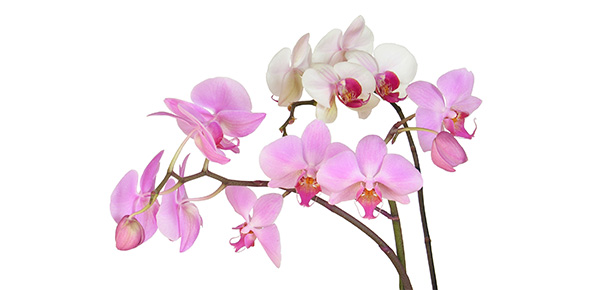Related Flashcards
Cards In This Set
| Front | Back |
|
1- eubacteria2-archaea3-eukaryotes
|
1- true bacteria, mitochondria, chloroplasts2- crenarchaeota (extremophiles, Sulfolobus), euryarchaeota (halophiles and methanobacteria), related taxa3- protists, plants, fungi, animals
|
|
Plants=
|
One branch in the evolutionary tree of life filled iwth organisms that actively convert CO2 and water into carbohydrates.
|
|
---great diversity in kinds of evolutionary status of plants: (a&b?)
--these groups share a number of features: |
A. green algae (chlorophytes), charophyean algae ans charophytesb. land plants
--1-chlorophyll a and b2- storage of carbohydrates, usually as starch, within chloroplasts with two membranes3-presence of anterior whiplike flagella, often modified or loss. |
|
Land plants (some live in water) = ?--characterists?
|
Embryophytes, closest relatives to Charophytes-thick walled spores-embryonic stage in life cycles-specialized structures that protect gametes: 1. archegonium for eggs 2. antheridium for sperm-a cuticle, waxy layer covering the epidermal cells-numerous DNA characteristics that show members of this group are a single branch of the tree of life
|
|
Two main groups of land plants:
|
1- Bryophytes: liverworts: two forms, thalloid and leafy, have stomataMossesHornworts2- Tracheophytes:-largest plant group with 260,000 known spp-members from major vegetation types across earth's terrestrial surface-largest group is angiosperms or flowering plants^---provide lions share of our food and medicine, etc
|
|
Systematics
|
The science of organismal diversity--part of the field of taxonomy
|
|
Taxonomy
|
Classification, description and naming of organisms usually using a hierarchal system.--oldest science= poisonous vs. edible--great deal of disagreement-terms are often used interchangeably.
|
|
Systemasists are interested in the evolutionary relationships or kinships between organisms.
|
---is a study of biodiversity, and its evolutionary history*** plant systematics definition-fundamentally trying to discover the branches of the evolutionary tree of life and document changes that have occurred through time. --systemasists have and continue to develop a system of classification to help us understand Earths diversity and evolutionary/genetic responses
|
|
Basic objectives of plant systematics:
|
1- Provide a convenient method of identifying, naming, and describing plant taxa2- Construct a system of classification that attempts to express phylogenetic relationships and consequently has predictive value.3- Produce an inventory of plant taxa at various scales of interest from local to global=produce floras.4- Develop an understanding of evolutionary processes and relationships.
|
|
Stages of plant systematics:
|
1- Pioneer- discovery and collection phase, still going on in tropics.2- Consolidation- synthesis, mostly based on morphology of field and herbarium specimens in preparation of floras and form morphology/structurally based classification systems.3- Experimental or biosystematic- analysis of wide variety of things such as reproductive systems, variation patterns, chemical, cytological, genetic, fertility relationships or evolutionary patterns.4- Encyclopedic or holotaxanomic- analysis and synthesis of all info and types of data to develop classification systems based on phylogenetic relationships.------stages 1 and 2 are often called alpha taxonomy------stage 4 is often called omega taxonomy.
|
|
1-Theory neutral school
|
(school of systematics)-methodology is theory neutral, they are just describing the similarity and differences between groups of org's around us.---science based on evidence at hand
|
|
2- Theory-grounded or based school
|
(school of systematics)-grouping represented by theorized or hypothesized branches in the evolutionary tree.---based on framework which allows one to hypothesize about possible missing entities we have not observed.---but can predict framework provided by evolutionary tree.
|
|
Science of systematics is based on the ability to produce a framework based on the concept of phylogeny:
|
=the evolutionary history of an organism or group of organisms1-modern molecular techniques and comp tech have revolutionized ability to discern phylogenies.2-example: a group called "Deep Green" was a 5 yr project to construct a comprehensive phylogeny of green plants, by 200 scientists in 12 countries, have used DNA analysis to radically question how green plants are related.
|
|
"Deep Green" has overturned several previously held theories:
|
1- overturned the traditional belief that the "land-plant invasion" was lead by seawater plants. Instead, found that primitive freshwater plants provided the ancestral stock from which all green land plants are descended.2- Also found that Amborella= trichopoda (New Caledonia) one of the oldest living angiosperm, similar to first ancestral angosperm, before it was thought that Magnolias (magnolids) or waterlillies (Nymphales) w/multiple flower parts were the closest relatives to the ancestral angiosperm.
|
|
Modern systematics utilize the following:
|
1- DNA sequencing in genes that readily mutate2- Paleobotany from Miocene3- Advances in comp tech4- biochemistry5- traditional morphology 6- advances in cladistics = characteristics plants have in common
|






